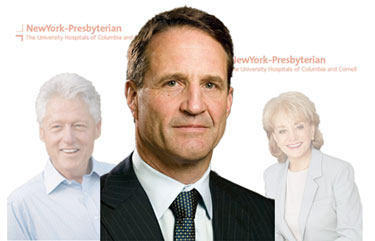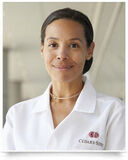“What About Mitral Valve Replacements Using A Catheter?” Asks Denny
By Adam Pick on March 23, 2012
I just received an interesting question from Denny about catheter heart valve replacement devices. Denny writes, “Hi Adam – I’m reading a lot about catheters being used for aortic valve replacement procedures. But, I never hear anything about using a catheter to replace the mitral valve. Why is that? Thanks, Denny”

Transcatheter Heart Valve Replacement Device
To answer Denny’s question, I contacted Dr. Craig Smith, the Chairman of Surgery at NewYork-Presbyterian Hospital / Columbia University Medical Center and principal investigator of the PARTNER trial for the SAPIEN transcather aortic valve replacement technology.

Dr. Craig Smith’s Former Patients Include President Bill Clinton & Barbara Walters
In response to Denny’s question, Dr. Smith noted:
The technology enabling catheter replacements of the mitral valve is at least 5 years behind replacement of the aortic valve, maybe longer. There are several anatomic differences that account for this. Catheter replacement of mitral valves that have been replaced surgically in the past are being done in small numbers now, using the prostheses designed for catheter aortic replacement.
Specific to the anatomical differences referenced above, Dr. Smith commented on the delivery system for the transcather mitral valve and the actual valve requirements:
The anatomy of the valve requires a very different approach to design. Delivery is also more complex, but less an issue than the anatomy of the valve.
Finally, I asked Dr. Smith a follow-up question, “Are the medical device manufacturers working on the catheter-based mitral valve replacement technology in parallel with the aortic valve replacement devices? Or, are the research and development costs so significant that it requires a more linear approach?”
In his response, Dr. Smith noted:
They are, but much more slowly. It will be closer to linear.
Thanks to Denny for her question and a special thanks to Dr. Craig Smith for sharing his clinical expertise with our patient and caregiver community. To learn more about Dr. Smith, click here.
Keep on tickin!
Adam
|
Nestoras Michael says on March 24th, 2012 at 2:41 am |
|
How close are the things for transcatheter replace an already replaced bioprosthetic valve? |
 |
|
Adam Pick says on March 24th, 2012 at 9:56 am |
|
Hi Nestoras, Great question about valve-in-valve procedures. You may want to visit this webpage for more information about that? Keep on tickin! Adam |
 |
|
Jane Metrano says on March 24th, 2012 at 4:19 pm |
|
How invasive is mitral valve replacement relative to aortic valve replacement – not using catheter? |
 |












